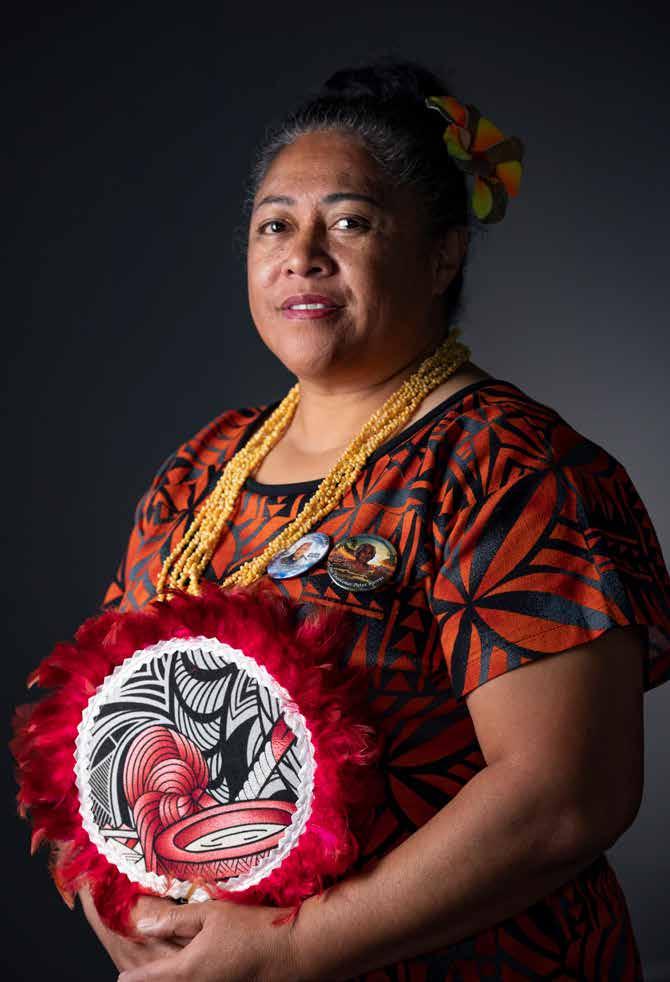
10 minute read
A Samoan journey
Chief Petty Officer Master At Arms Lino Kurene
Bring the whole of yourself to the Defence Force
Chief Petty Officer Master At Arms Lino Kurene was 16 years old when she walked out of school after her last exam. She hadn’t been confident about her success and she was proved right; she only managed to pass two School Certificate subjects. She picked up her CV and began knocking on doors in Palmerston North.
She did get a job with Telecom, but she had also applied to join the Navy. “I really didn’t intend to join. The mobile recruiting unit came to Palmerston North and I took time off from a class one day to go. I guess when you are 16 you are keen for anything, even a little fiapoto and when your life has always been about “aiga and lotu” this was like an adventure.”
She scored well in her recruiting tests. When she got her call-up letter she boarded an overnight train from Palmerston North to Auckland and started with the first intake of Navy recruits for 1986.
Today CPOMAA Kurene is a Divisional Chief Petty Officer at the Recruit Training Squadron, responsible for delivering the training and development of new recruits into professional and disciplined sailors. She credits her Samoan upbringing and foundations established at home, augmented with Navy training, for her achievements to date. She was notably the first Samoan female to become an Acting Warrant Officer in the Royal New Zealand Navy. But when she was 16, she didn’t know New Zealand had a Navy. She was born in New Zealand after her father Patea Viliamu Luafalealo Kurene (Luatuanu’u) and mother Lino Semisi Kurene (Moata’a) migrated to New Zealand in the mid-1950s.
“They were part of a small handful of Samoans who settled in Palmerston North and were founding members of the Samoan Methodist Church (Lotu Metotisi) in Palmerston North. Attending church regularly, my siblings and I continued to learn our Aganu’u and Gagana Samoa as part of Sunday School as well as being raised ‘Fa’a Samoa’ and we were surrounded by our people, our language, our culture growing up. “My family life was one where ‘toona’i’ in our family home was a table laden with dishes prepared by our mum and her sisters and included favourites such as sapasui, talo fa’alifo, luau, povi masima among other things, and maybe panipopo and/or pineapple pies for dessert if one our aunties was happy to bake.” She remembers the smell of fire piercing the dark morning sky as her father, uncles and brothers prepared to put down an ‘umu’ for visiting Faifeau or other special occasions. “There would be hoses running to wet the sacks and newspaper. As kids we were sent up the street to find willow to stuff the pig while the younger ones eagerly waited to see the pig being cleaned before it took its place among the heated stones. I remember one day that a pig got out of the sack and was off running up the street and together with our cousins we were sent to recover the pig. Annually the celebration of Children’s White Sunday meant a day of new outfits; memory verses and the occasional tears but also memories of days gone by.” She was blessed to belong to a big family, as one of 11 children. “We had enough siblings and cousins to field a couple of sports teams and it meant we were never short of friends. We were also never short of advice (wanted or otherwise) from having our parents and so many Aunties and Uncles, but it also meant we were never short of love.”
When her letter of acceptance came, she had no idea how to tell her parents – they didn’t know she’d applied. “Fortunately for me my eldest sister was visiting from Wellington and asked mum to let me go. None of us even knew what this meant, this was a first for our family. “The day I left I remember my mum cooked me some of her best dishes before delivering me to the train station. Only when I became a mother myself and my children wanted to move away did I truly know how big and hard it was for my mum to let me go.”
“In the initial couple of years it took a little bit to see how this fitted into the expectations of being a sailor, but I got there and I continue to use this knowledge and these experiences to interact with my superiors and subordinates.”
Apart from two years posted to the Navy communications station HMNZS IRIRANGI near Waiouru, she has been based in Auckland. After the success of the Woman at Sea programme she decided to take up the challenge. “I was fortunate enough to travel overseas a number of times including to the Far East – Malaysia, Singapore, Vietnam, Hong Kong, Bangkok – and this included my greatest moment, coming alongside in Apia Port onboard HMNZS TE KAHA with my Aunty and cousin waiting on the jetty.” There were very few Pacific Islanders in the Navy when she joined that she knew, and it meant there was noone she could identify with to speak Samoan to. “Having a language, a culture to identify with means we are rich, although not in the monetary or asset sense; it gives a sense of identity, a sense of belonging.” She ‘lost’ her language and found returning home sometimes hard. “I didn’t have ready access to keep my culture alive when I returned to Auckland.” She would sometimes visit Otara Market to hear her culture again. “I would spend the whole day just getting my fix of island food and listening to conversations in Samoan or music that filled my cup and gave me that sense of home.”
Her partner, Warrant Officer Weapon Technician Nicholas Rowe, is also in the Navy, which meant raising their children Tyana and Keneti was a balancing act for them. If courses or deployments overlapped, the children would stay with friends or spend time in Palmerston North or Wellington with family. “Such is the beauty of being surrounded by the village that loves you, and helps to raise your children till you return home. After I left the Navy in 2012 I realised that as a family, my partner and I and our kids had 13 years where we had never spent a full 12-month period living under the same roof, and this only cemented the support and love we had that allowed us to have a career.” CPOMAA Kurene had a nine-year stint at the Ministry of Social Development as an Investigator. She rejoined the Navy last year into her role at the Recruit Training Squadron. “No two days are the same in the training environment, from delivering modules, marking exams, reviewing course content or facilitating wraparound services for recruits in terms of their welfare needs. We are fortunate to have a diverse group of instructors from all trades and ethnicities who are passionate about their job.” It’s that diversity of today she celebrates. “Being the first Samoan female to attain the rank of Warrant Officer in the RNZN was significant to me and to see years later the promotion of the first Tongan Warrant Officer in the RNZN and more recently first Tongan female promoted to Chief Petty Officer means that those coming through the ranks will continue to have positive role models.” She is looking forward to joining her partner in Fiji, where he is a Technical Adviser to the Republic of Fiji Military Forces. “I hope to use my experiences, service knowledge and the knowledge I gain from my Gender Focal course to help empower the females in the military in the Pacific Islands.” Home means family, surrounded by laughter, retelling of stories of old and happy times with parents, aunties and uncles reflecting on the more serious moments of growing up – coupled with moments of reflection remembering loved ones who have passed on. “Whatever the occasion, it is the constant flow of conversation in Samoan and English with the old familiar tunes in the background that keep me grounded. My sister and I recently observed our grown children reminiscing in the very same way except it was about us; each one taking turns to impersonate or mimic our ‘sayings’; it was us – just 30 years younger. Today my siblings and I continue to serve our wider family and church community in the ways that our parents and older sister did. “I consider myself to be blessed to have reconnected years ago and I continue to learn more regardless of how old I get. I hope to continue to support others regardless of their ethnicity to maintain their identity and empower them to do so. ” Bring the whole of yourself to the New Zealand Defence Force, she says. “Don’t shed your culture or your identity, it’s what makes you you, it’s what makes you unique.
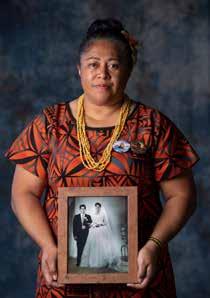
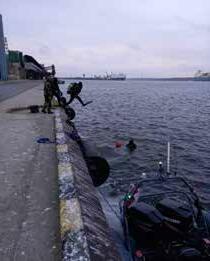
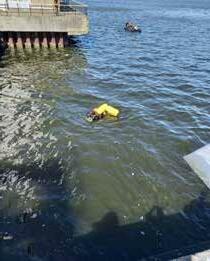
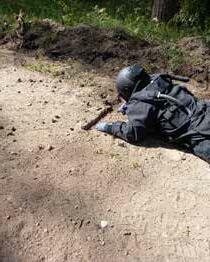
Bombs in the Baltic
Maritime Countermeasures Dive Officer Lieutenant Warwick Creasy worked with the Royal Navy to tackle Unexploded Ordnance (UXO) from the World Wars off the coast of Lithuania.
In his story to Navy Today, he describes how Operation Open Spirit gives a very real insight into the dangers Mine Clearance divers face. The Baltic Sea was an area that saw a large amount of conflict during World Wars I and II. This has resulted in a large amount of Unexploded Ordnance (UXO), with everything from sea mines, torpedoes and depth charges, to small calibre ammunition located throughout the maritime area. Operation Open Spirit is a multinational operation conducted annually in either Lithuania, Latvia or Estonia to conduct historical ordnance disposal operations in the Baltic Sea. This year’s operation was led by Lithuania and was also combined with a concurrently-run Explosive Ordnance Disposal (EOD) exercise. As part of my Mine Warfare and Clearance Diving Training and Exchange I was fortunate to be posted to the Diving and Threat Exploitation Group (DTXG) Delta and Echo squadrons in the Royal Navy when this activity was taking place. These squadrons are responsible for Expeditionary Mine Counter Measures (MCM), Expeditionary Improvised Explosive Device Disposal (IEDD) and support to the Commando Force for Very Shallow Water (VSW) operations and Pre-Landing Force (PLF) activity. Delta squadron from DTXG attended the activity utilising various underwater search systems including Autonomous Underwater Vehicle (AUV) and Clearance Divers to identify UXO and other contacts of interest. I was very fortunate to attend and see first-hand how various NATO nations conducted their mine warfare clearance diving and EOD Operations. The sub-surface search teams I observed operated near-shore, and any contacts that met the threshold to require further interrogation were given to the various NATO teams to investigate. Clearance divers from DTXG were utilised to investigate several mine-like contacts and other areas such as wharves and jetties that had previously been identified as potential areas for UXO. Several sea mines and a number of other UXO were identified and countermined by the various nations during this operation. The Royal Navy DTXG divers conducted numerous dives on Explosive Remnants of War (ERW) targets of interest and showed a high level of skill and efficiency when it came to searching for smaller ordnance and items within the complex harbour areas. I was also able to observe the EOD exercise that the other teams participated in. This consisted of different maritime IED scenarios each day, often complex, and changing between land and maritime scenarios and battlespaces to test the Command and Control of the force.
Being able to observe mine clearance, diving and EOD operations, as well as the planning and briefing conducted by various nations was an opportunity of significant benefit to me. Additionally, getting the opportunity to see a range of IED scenarios in a Maritime setting and observe the command and control required helped give me a greater insight into this highly specialised and high risk warfare domain and appreciate better the threats and risk that our own RNZN Maritime Clearance Diving and EOD teams face.
If you want excitement, global travel, cutting-edge technology and better work stories, then the MCDO Warfare Trade could be for you. Email dive.recruit@nzdf.mil.nz for more details.






